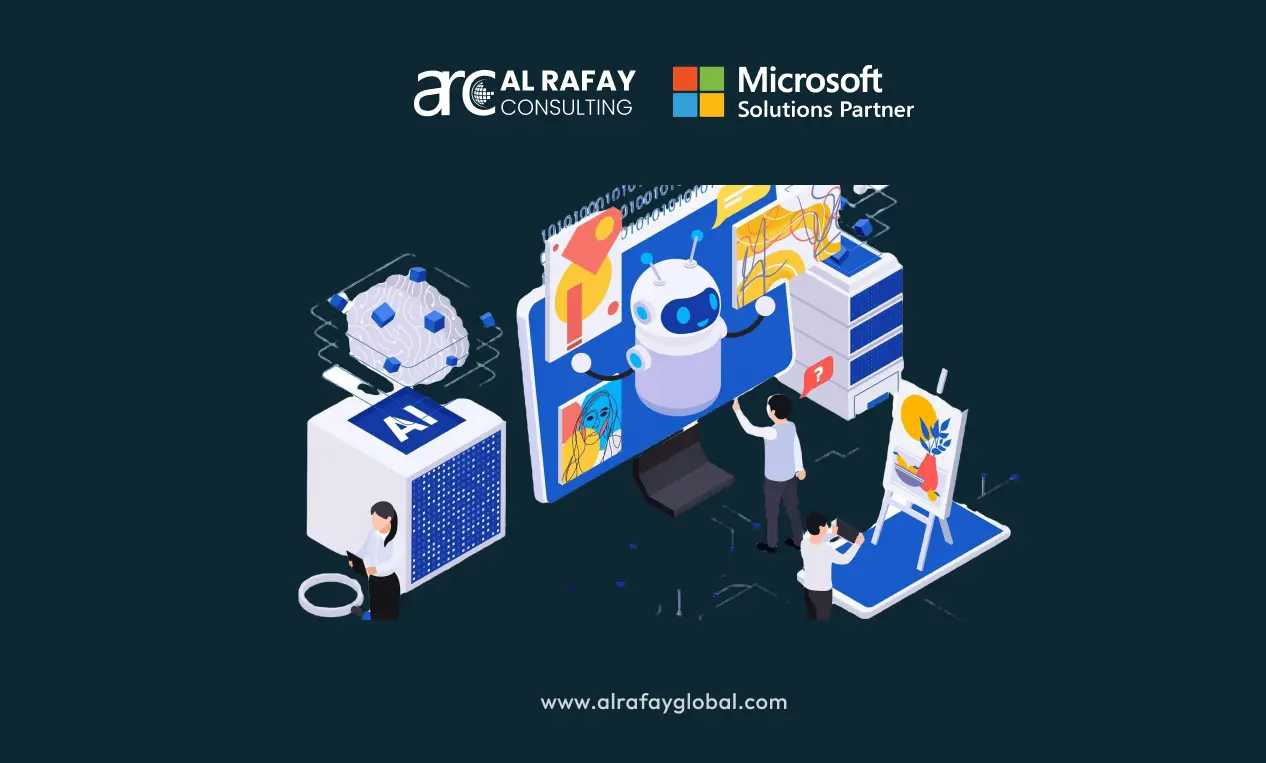Artificial intelligence (AI) is no longer just a futuristic concept; it has become a transformative force in business, helping companies across industries drive efficiency, innovation, and competitiveness. However, implementing AI in a meaningful, scalable, and ethical way requires careful planning and strategic alignment with business goals.
This blog serves as a comprehensive guide for technical professionals and business leaders looking to craft a robust AI strategy.
Understanding AI in a Business Context
What is AI?
Artificial intelligence refers to systems or machines that mimic human intelligence to perform tasks and can iteratively improve themselves based on the information they collect. AI includes various subfields such as:
- Machine Learning (ML): Systems that can learn from data to make decisions or predictions.
- Natural Language Processing (NLP): Systems capable of understanding and interacting with human language.
- Computer Vision: Technology that interprets and understands visual information from the world.
- Machine Learning (ML): Systems that can learn from data to make decisions or predictions.
AI’s Role in Business
AI is being widely adopted in industries like healthcare, finance, retail, and manufacturing. According to a report by McKinsey, AI could potentially deliver an additional $13 trillion to the global economy by 2030. Here’s how AI is influencing key sectors:
- Healthcare: Predictive analytics for patient outcomes, automated diagnostics.
- Finance: Fraud detection, personalized financial advice.
- Retail: Customer personalization, inventory management.
- Manufacturing: Predictive maintenance, supply chain optimization.
- Healthcare: Predictive analytics for patient outcomes, automated diagnostics.
Key Business Drivers for AI Adoption
AI adoption is often driven by several factors:
- Cost Efficiency: AI automates repetitive tasks, leading to significant cost savings.
- Improved Decision-Making: AI systems analyze large datasets to uncover insights that would be impossible for humans to process manually.
- Automation: AI reduces manual work through automation, increasing productivity.
- Customer Experience: AI personalizes customer interactions, improving satisfaction and retention rates.
- Cost Efficiency: AI automates repetitive tasks, leading to significant cost savings.
Aligning AI Strategy with Business Goals
AI implementation should begin with a clear understanding of the company’s business objectives. Whether the goal is to enhance customer experiences, reduce operational costs, or optimize supply chains, AI should be a tool that supports these objectives. Companies must ensure that their AI strategy directly aligns with their broader business goals.
Identifying Use Cases
It’s crucial to identify AI use cases that will bring the highest return on investment (ROI). For example, in retail, predictive analytics can help in demand forecasting, while in healthcare, AI can support medical imaging analysis. A clear understanding of high-impact use cases allows organizations to allocate resources efficiently.
Prioritizing Initiatives
Not all AI projects are equal in terms of complexity and impact. A structured framework for prioritizing AI initiatives is essential. Consider factors such as:
- Business Impact: The potential for revenue growth or cost savings.
- Feasibility: The technical complexity and availability of necessary data.
- Strategic Alignment: How well the initiative supports the long-term vision of the company.
- Business Impact: The potential for revenue growth or cost savings.
Risk Management
AI projects come with a variety of risks, including technological failures, ethical concerns, and operational issues. Risk management strategies must include:
- Technological Risk: AI models may not work as expected or may fail to scale.
- Mitigation: Start with a proof of concepts (PoCs) and scale gradually.
- Mitigation: Start with a proof of concepts (PoCs) and scale gradually.
- Ethical Risk: AI can perpetuate biases, especially in hiring or law enforcement.
- Mitigation: Implement fairness checks and ensure diverse datasets.
- Mitigation: Implement fairness checks and ensure diverse datasets.
- Operational Risk: AI systems may require frequent updates and maintenance.
- Mitigation: Invest in continuous AI lifecycle management and maintenance processes.
- Technological Risk: AI models may not work as expected or may fail to scale.
Building AI Expertise and Culture
In-House vs. Outsourcing
One of the most critical decisions in AI strategy is whether to build an internal AI team or outsource to external vendors. Both approaches have pros and cons:
- In-House Development: Offers greater control, customizability, and security. However, it requires significant investment in talent acquisition and training.
- Outsourcing: Provides quicker access to expertise but may come with risks around data privacy, intellectual property, and vendor lock-in.
- In-House Development: Offers greater control, customizability, and security. However, it requires significant investment in talent acquisition and training.
Companies may adopt a hybrid approach—using external experts for initial phases while gradually building in-house capabilities.
Talent Acquisition and Development
Building an AI team requires hiring for specialized roles, including:
- Data Scientists: Experts in building predictive models.
- AI Engineers: Responsible for creating scalable AI architectures.
- Machine Learning Engineers: Focus on implementing machine learning algorithms.
- Ethics Experts: Ensure that AI applications comply with ethical guidelines.
- Data Scientists: Experts in building predictive models.
Promoting a Data-Driven Culture
To maximize AI’s impact, companies must foster a culture that values data-driven decision-making. This includes:
- Data Literacy: Providing training to non-technical teams on how to use and interpret AI outputs.
- Cross-functional collaboration: Encouraging collaboration between business units, data teams, and AI specialists to ensure that AI initiatives align with business needs.
- AI Awareness: Helping all employees understand the strategic importance of AI through internal communications and workshops.
- Data Literacy: Providing training to non-technical teams on how to use and interpret AI outputs.
Data as the Foundation of AI
Data is the fuel that powers AI systems. The quality, quantity, and diversity of data directly affect the performance of AI models. Poor-quality data leads to unreliable AI models, which can result in inaccurate predictions or biased outcomes.
A study by IBM found that businesses spend nearly 80% of their AI development time preparing and cleaning data. This highlights the importance of investing in high-quality data infrastructure and practices.
Data Strategy
A robust data strategy includes the following key elements:
- Data Collection: Identifying the most relevant data sources, whether internal (CRM systems, transactional data) or external (social media, third-party data providers).
- Data Storage: Implementing scalable storage solutions, such as cloud-based data lakes, to handle vast amounts of structured and unstructured data.
- Data Governance: Establishing policies for data ownership, access control, and compliance with industry standards (e.g., GDPR, HIPAA).
- Data Collection: Identifying the most relevant data sources, whether internal (CRM systems, transactional data) or external (social media, third-party data providers).
| Key Elements of Data Strategy | Description |
| Data Collection | Identifying data sources (internal and external). |
| Data Storage | Scalable storage for structured/unstructured data. |
| Data Governance | Policies for data ownership and compliance. |
Ethical Considerations
AI systems often require access to large datasets, which may contain sensitive or personal information. This raises several ethical concerns:
- Data Privacy: AI systems must comply with global data protection regulations like GDPR (General Data Protection Regulation) and CCPA (California Consumer Privacy Act).
- Bias and Fairness: Biased data can result in AI systems that discriminate against certain groups. Continuous auditing is necessary to identify and mitigate biases.
- Data Privacy: AI systems must comply with global data protection regulations like GDPR (General Data Protection Regulation) and CCPA (California Consumer Privacy Act).
Data-Driven Decision-Making
By utilizing high-quality data, AI can support data-driven decision-making across departments. For example:
- Marketing: AI helps identify customer segments and predict behaviors.
- Operations: AI supports supply chain optimization and inventory management.
- HR: AI can streamline talent acquisition by predicting high-performing candidates.
- Marketing: AI helps identify customer segments and predict behaviors.
What Benefits Can You Expect from Using AI for Strategic Planning
Integrating AI into strategic planning brings significant advantages for businesses, providing them with new tools to navigate the complexities of decision-making and long-term strategy development.
1. Enhanced Decision-Making
AI systems are capable of processing large volumes of data at speeds that would be impossible for humans. By analyzing patterns and generating predictive insights, AI enables leaders to make more informed and data-driven decisions. For instance, AI can predict market trends, customer behaviors, or operational risks, allowing businesses to act proactively rather than reactively.
According to a Gartner study, companies that embrace AI in decision-making can improve outcomes by up to 25%, as AI’s ability to digest complex data quickly and accurately allows for better forecasting and planning.
2. Increased Efficiency and Cost Savings
AI significantly improves operational efficiency by automating repetitive tasks and optimizing resource allocation. In strategic planning, AI can automate data analysis, scenario modeling, and risk assessments, freeing up human resources to focus on creative and high-level tasks. This automation results in cost savings, reduced human error, and more streamlined operations.
For example, predictive analytics can help optimize supply chains by forecasting demand more accurately, leading to reduced waste and inventory costs. According to McKinsey, Successfully implementing AI-enabled supply-chain management has enabled early adopters to improve logistics costs by 15 %.
3. Scenario Planning and Risk Mitigation
AI excels at running simulations and “what-if” scenarios to help organizations explore different strategic outcomes. By using historical and real-time data, AI models can project future outcomes based on different variables, providing strategic planners with a range of possible future scenarios. This helps companies anticipate challenges and adjust their strategies accordingly.
For example, AI can simulate how various economic conditions might impact sales, allowing businesses to plan for downturns or capitalize on growth periods. In this way, AI helps mitigate risks by enabling more robust, data-driven scenario planning.
4. Personalized Strategies
AI allows businesses to tailor their strategies more effectively. By analyzing customer data, market behavior, and operational performance, AI can help companies create personalized strategies that are more likely to resonate with specific customer segments or market conditions. For instance, personalized marketing strategies driven by AI can result in higher customer engagement and retention.
Technology Infrastructure for AI
The foundation of AI strategy involves selecting the appropriate technology stack. Organizations can choose between building custom AI models using open-source libraries or adopting commercial AI platforms. According to the Straits Research report global AI infrastructure market is expected to reach USD 304.23 billion in 2032.
Popular AI platforms include:
- Google Cloud AI: Offers tools for ML model building, speech-to-text, and image recognition.
- Microsoft Azure AI: Provides a range of services, including bot frameworks, NLP, and custom vision.
- AWS Machine Learning: Includes services for model development, training, and deployment.
- Google Cloud AI: Offers tools for ML model building, speech-to-text, and image recognition.
Scalability and Integration
AI solutions must be scalable to accommodate growing data volumes and evolving business requirements. To achieve scalability, businesses must:
- Cloud Solutions: Adopt cloud services that offer elastic computing power and storage.
- Integration with Existing Systems: Ensure that AI systems seamlessly integrate with core business applications like ERP (Enterprise Resource Planning) or CRM (Customer Relationship Management) systems.
- Cloud Solutions: Adopt cloud services that offer elastic computing power and storage.
Security Considerations
AI systems are vulnerable to a variety of security risks:
- Adversarial Attacks: Malicious inputs that trick AI models into making incorrect predictions.
- Model Vulnerabilities: AI models can be exposed to manipulation if not properly secured.
- Adversarial Attacks: Malicious inputs that trick AI models into making incorrect predictions.
Best practices for securing AI systems include encryption, continuous monitoring, and implementing strict access controls.
AI Governance and Ethical Framework
AI governance involves establishing formal structures to oversee the ethical, legal, and operational aspects of AI strategy. This includes setting up an AI governance committee that oversees:
- Compliance: Ensuring adherence to relevant laws and regulations.
- Model Performance: Regularly reviewing AI model performance to ensure reliability and fairness.
- Compliance: Ensuring adherence to relevant laws and regulations.
AI systems must not perpetuate existing societal biases, especially in critical areas like hiring, loan approvals, or law enforcement. Ensuring fairness requires:
- Diverse Training Data: Using representative datasets to reduce bias.
- Regular Audits: Continuously auditing AI models to identify and mitigate bias.
- Diverse Training Data: Using representative datasets to reduce bias.
Building AI systems that are explainable and transparent is essential for maintaining trust. Techniques such as Explainable AI (XAI) provide insights into how decisions are made, ensuring accountability and traceability.
Measuring AI Success and Continuous Improvement
To effectively measure the success of AI projects, businesses must establish clear Key Performance Indicators (KPIs) that align with their overall strategic goals. These KPIs serve as quantifiable metrics that provide insights into the performance and impact of AI initiatives. Some common examples of effective KPIs include:
- Cost Savings: One of the most immediate benefits of implementing AI technologies is the potential for significant reductions in operational costs. By automating repetitive tasks, businesses can free up valuable resources, allowing them to allocate personnel and budget to more strategic initiatives. Tracking the percentage decrease in operational costs directly attributed to AI can provide a clear picture of its financial benefits.
- Model Accuracy: The precision and reliability of AI predictions are crucial for ensuring that the technology is delivering meaningful insights. By measuring model accuracy, businesses can assess how well their AI systems are performing and make necessary adjustments to improve outcomes. Regular evaluations help in identifying areas for enhancement and in maintaining high standards of predictive reliability.
- Customer Satisfaction: Ultimately, the effectiveness of AI projects can be reflected in customer experience metrics, such as Net Promoter Scores (NPS). An increase in customer satisfaction indicates that AI-driven initiatives are meeting or exceeding user expectations. Monitoring these metrics allows businesses to understand how AI influences customer perceptions and loyalty.
- Cost Savings: One of the most immediate benefits of implementing AI technologies is the potential for significant reductions in operational costs. By automating repetitive tasks, businesses can free up valuable resources, allowing them to allocate personnel and budget to more strategic initiatives. Tracking the percentage decrease in operational costs directly attributed to AI can provide a clear picture of its financial benefits.
In addition to defining KPIs, it is essential for AI models to undergo continuous updates to remain effective. This process includes monitoring model performance regularly, retraining models with new data to ensure they adapt to changing trends, and retiring models that no longer provide value.
AI systems should be designed with feedback loops that enable them to learn and improve over time. For instance, customer service chatbots can become increasingly effective by continuously analyzing past interactions and adjusting their responses based on real-time customer feedback. This iterative process not only enhances the capabilities of AI systems but also fosters a more responsive and adaptive approach to customer service.
By establishing clear KPIs and emphasizing the importance of ongoing model maintenance and feedback, businesses can ensure that their AI initiatives deliver substantial and sustainable value.
Case Studies: Successful AI Strategy Implementation
Amazon’s Personalization Algorithms
Amazon’s recommendation engine is a prime example of the successful application of artificial intelligence (AI) strategies in business. By meticulously analyzing customer behavior and preferences, Amazon generates highly personalized product recommendations that cater to individual shopping habits. This sophisticated algorithm considers various factors, including previous purchases, browsing history, and items frequently bought together. The result is a tailored shopping experience that not only enhances customer satisfaction but also drives a significant portion of Amazon’s sales. In fact, studies indicate that a substantial percentage of Amazon’s revenue is directly attributed to its recommendation system. By presenting relevant products to customers, Amazon increases the likelihood of additional purchases, thereby boosting its overall revenue. This data-driven approach has established a benchmark for e-commerce platforms, illustrating the power of personalization in creating a loyal customer base.
Google’s AI-Driven Customer Service
Similarly, Google employs advanced AI technology to revolutionize customer service across its diverse range of products. By leveraging Natural Language Processing (NLP), Google’s AI systems are capable of processing and understanding customer queries in real time. This technology enables the handling of millions of customer interactions daily, streamlining support processes and improving efficiency. As a result, human agents can focus on more complex and nuanced issues that require personal attention and expertise. The integration of AI in customer service not only enhances response times but also allows for 24/7 support, significantly improving the overall customer experience.
Key Lessons for Businesses
From these noteworthy examples, businesses can extract several key lessons. First, organizations should focus on high-impact use cases, identifying AI projects that yield measurable business outcomes. Second, scalability is crucial; businesses must ensure that their AI solutions can grow alongside the organization. Finally, the implementation of ethical AI practices is paramount. This includes prioritizing fairness, transparency, and data privacy to build trust with customers and stakeholders alike. By adopting these principles, companies can harness the power of AI effectively and responsibly.
Challenges and Risks for Strategic Planning with AI
Despite its benefits, AI also introduces challenges and risks that businesses need to navigate carefully during strategic planning.
Data Quality and Availability
One of the biggest challenges in AI strategy planning is ensuring high-quality data. AI algorithms rely on large datasets for training and inference, and poor-quality or incomplete data can lead to inaccurate predictions, unreliable outcomes, and wasted investments. Many companies struggle with siloed data sources, unstructured data, or outdated information, all of which can hinder the effectiveness of AI models.
Ethical and Regulatory Risks
As AI becomes more embedded in decision-making, ethical and regulatory risks grow. AI models trained on biased datasets can perpetuate societal inequities, leading to discriminatory decisions in areas such as hiring, law enforcement, and lending. Furthermore, privacy concerns arise when AI systems handle sensitive personal data. Companies must adhere to regulatory frameworks like the General Data Protection Regulation (GDPR) in Europe or the California Consumer Privacy Act (CCPA) in the U.S., ensuring transparency and user consent.
Integration with Existing Systems
AI often needs to work seamlessly with existing legacy systems, which may not have been designed with AI integration in mind. This creates operational challenges related to system compatibility, data integration, and scalability. Without proper alignment, AI initiatives may fail to deliver value or disrupt existing workflows.
Talent Shortages
AI requires specialized expertise in areas like machine learning, data science, and model deployment. There is currently a significant talent gap in these fields, making it challenging for organizations to build the right teams to support their AI ambitions. Moreover, even with an in-house team, constant upskilling is necessary to keep pace with advancements in AI technologies.
Costs and Resource Allocation
AI projects often require significant upfront investments in technology, talent, and infrastructure. The cost of building AI systems, managing data, and maintaining models can be substantial, especially for smaller businesses. Poor planning or inadequate resource allocation can lead to underwhelming results and wasted investments.
Conclusion and Future Trends
Building an AI strategy requires understanding its potential, aligning initiatives with business goals, and ensuring proper governance. Key trends include AI democratization, automation, and generative applications, which will transform industries. Organizations should refine their AI strategies now to drive innovation and position themselves as industry leaders for long-term success.
For any consultations regarding enterprise AI initiatives for your organization, reach out to our Microsoft-certified team of AI specialists at Al Rafay Consulting.













